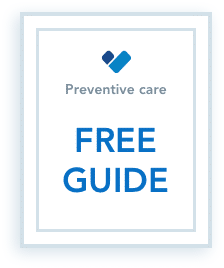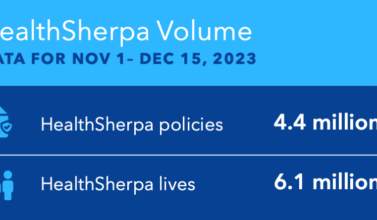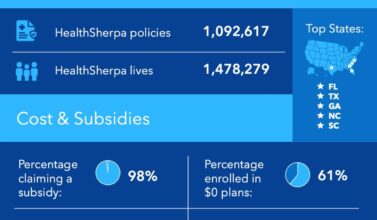Enhanced Direct Enrollment (EDE) Is Live — Here’s Why It’s So Important
It’s always been our mission to help people access health care. When we started HealthSherpa five years ago, we saw that the ACA had amazing potential to provide millions of people with access to health care for the first time, that it moved the U.S. closer to the notion of health care as a right. But we also saw that the vehicle for helping people gain access by obtaining subsidized health insurance — public marketplaces — would be hobbled by largely disregarding private entities that could help with the ACA’s success.
With today’s announcement that Enhanced Direct Enrollment (EDE) is available, and that HealthSherpa is the first and, thus far, only private marketplace live with EDE, that mission has taken a giant leap forward.
EDE helps us provide a better experience for people who want to get covered and to engage those — millennials and red-staters, for example — who may not otherwise get covered. It also brings brokers, web-based entities (like HealthSherpa) and health insurance payers into the fold in ways that finally acknowledge the essential role they play in providing access to health care for millions of Americans. (Brokers are responsible for more than 50% of all ACA-compliant coverage in the individual market.)
The collaboration needed to make it a success will provide a blueprint for the future of shopping for and enrolling in health coverage.
What is EDE?
Simply put, EDE is a way for private companies to help people enroll in ACA-subsidized plans (AKA Qualified Health Plans, or QHPs) on their websites without going through Healthcare.gov. The “old way” (which is also still the “current way” for most) when using a private enrollment site like HealthSherpa is to shop for plans using our shopping and and decision-support tools, but then have us redirect your web browser to Healthcare.gov to complete your enrollment. There are obvious drawbacks to that experience: it doesn’t work on mobile, it takes a lot longer, and you have to repeat some steps.
A lot of people who you want to get covered (e.g. young healthy people) can’t be bothered to put up with that noise. On the flip side, all the sickest people who desperately need coverage, will move mountains to enroll. They’ll apply via etch-a-sketch if they have to.
But with EDE, everything happens on the private marketplace.
Even more simply put for techies, it’s API access that lets private marketplaces like HealthSherpa do what they do best — provide a best-in-class shopping and service experience all the way through the enrollment process.
Why is EDE important?
EDE is important for a lot of reasons. Here are a few:
- It makes it a lot easier to enroll — and to stay covered. Conversion rates for EDE are two to five times higher than the old approach depending on the enrollment channel. In other words, a lot more people enroll when you bring down barriers, and the redirect is a big barrier. You kind of have to have experienced how bad the old approach was to believe it.
- The much higher conversion rate brings ACA coverage closer to parity with inferior coverage that is easier to enroll in online, like short-term plans. Too many consumers don’t know that short-term plans aren’t “real” health insurance. And since online insurance marketing is woefully under-regulated, unscrupulous sellers can run ads for “Obamacare” and “ACA coverage” and then take you to a site that only offers short-term. And since it takes 10 minutes to sign up for that type of coverage and 30-45 minutes or more to sign up for an ACA plan, the worse coverage had an advantage. EDE levels that playing field by streamlining enrollment in ACA coverage with a shorter application flow.
- An issue that EDE does not address directly but still may help with is broker commissions, which can run 20-30% on short-term plans vs. 2-5% on ACA coverage. Brokers, especially those focused on the individual market, are by and large committed to helping consumers. They don’t want to throw them into bad short-term plans. But they also work only on commission in most cases, so they will follow their heart when they can and their head when they need. EDE enables them to do both. When ACA enrollment is easier, brokers are more likely to emphasize these offerings when selling.
At its core, EDE helps bridge the gap in user experience between ACA enrollment and everything else. That’s why it’s important to realize that the competition for EDE isn’t Healthcare.gov — we’re all on the same mission to provide quality, affordable coverage to Americans — it’s the hodgepodge of inadequate coverages like short-term, critical illness, hospital indemnity, etc. that can come with shopping outside of ACA compliance. EDE levels the playing field somewhat, and makes it easier to sell far superior ACA coverage.
With that said, there are legitimate concerns with EDE that will require vigilant focus and sincere long-term partnership between CMS and private marketplaces. There is a precedent here: Medicare Advantage and Medicare Supplement plans. We’ll share more on that analogy in a later post but for now let’s take a look at some of the issues we want to watch for with EDE:
Security. The year-long audit process for EDE approval covered nearly 300 NIST controls, and was extremely painful, as it had to be. EDE entities are being held to the same standard as the contractor building Healthcare.gov. We welcome that scrutiny for the sake of our customers.
Bait-and-switch. There are explicit restrictions preventing EDE entities from showing other plans alongside QHPs, and CMS is actively auditing EDE sites for that. HealthSherpa doesn’t sell non-ACA plans, so it’s not a concern with us. However, this issue will need to be monitored closely on an ongoing basis by regulators (CMS).
Biased Recommendations. EDE entities could weigh their shopping experience and recommendations towards plans that pay a higher commission. Again, HealthSherpa’s algorithms are designed to meet consumer needs, not broker commission goals, but others might take a different approach. Note that this risk existed with the old approach, since plan shopping always occurred on the partner site and not on Healthcare.gov.
Marketplace fragmentation. Insurance companies can get EDE too, and set up their own private-label single-carrier “Healthcare.govs.” That defeats the purpose of an exchange. Insurer interest in EDE is off the charts. We see this concern as a double-edged sword—no competition on those sites has to be weighed against increased interest and investment in the ACA by insurers. Now that a new consumer reality emerges with EDE, perhaps it’s best to look at other retail markets, where a product can live on the shelves of an aggregator like Walmart and also be sold through its own branded store. Time will tell.
These concerns have to be weighed against the benefits to consumers and the ACA ecosystem as a whole.
EDE has tremendous potential. Thanks to EDE, we can create an app so that people can sign up for and use ACA coverage on their smartphone (Android only so far).
We can also readily integrate with employers to make getting ACA coverage as a part-time employee as easy as getting your paycheck. Looking further ahead, for employers looking at the new HRA regulations allowing for sending full-time employees to the individual market to get covered, EDE gives them an experience that gets them what they want and need a whole lot faster and more easily.
We can compete with short-term sellers on clicks. The possibilities are great and ongoing, but the challenges and the sales time is immediate.
Congratulations to the phenomenal HealthSherpa team for being the first and only approved EDE entity. The story of how a small startup beat out an entire industry to get here deserves to be told. In the meantime, we’ll get back to writing that story in real time.
And…remember to enroll by January 15th!














Leave a Comment